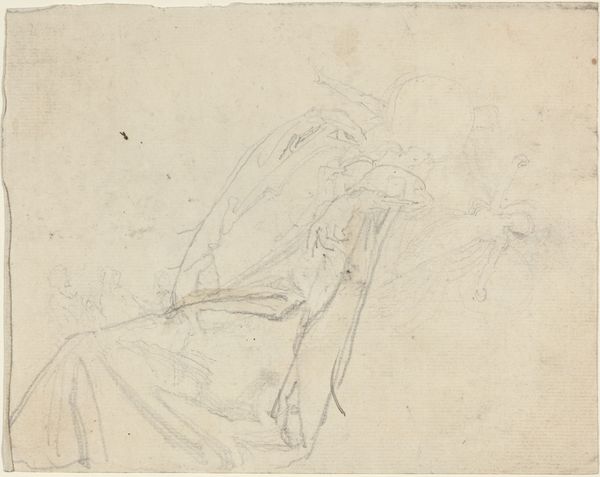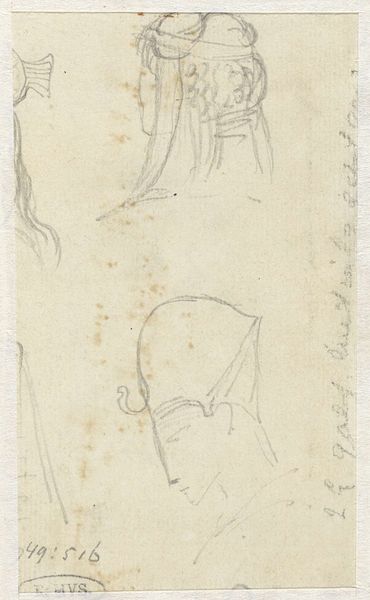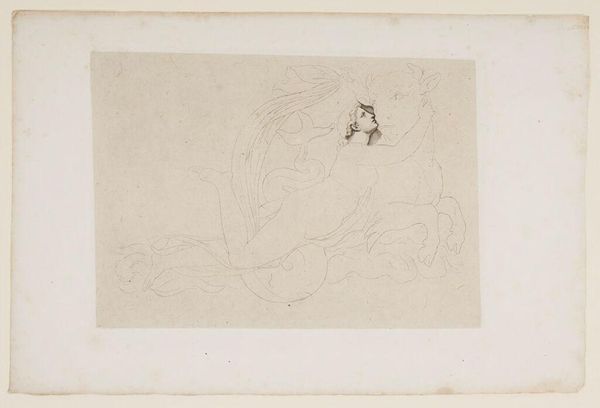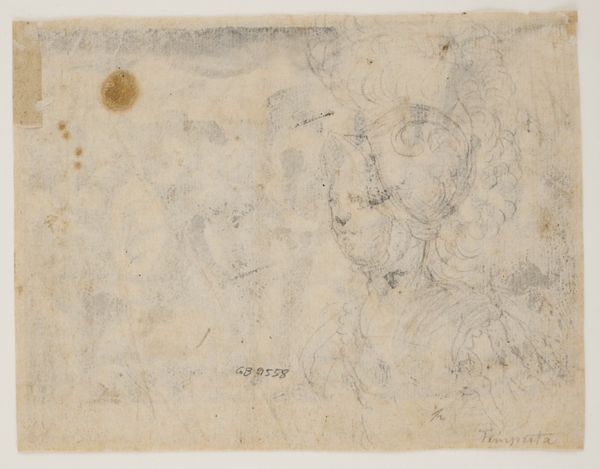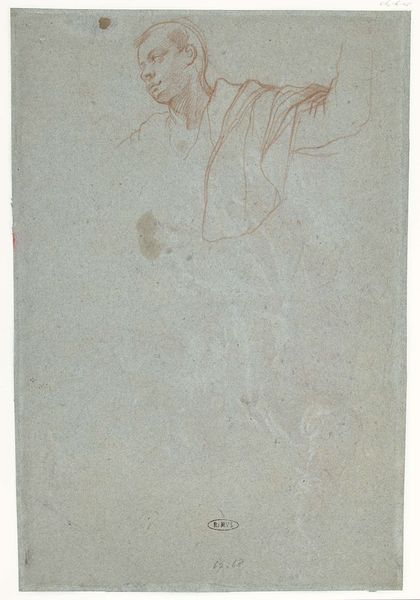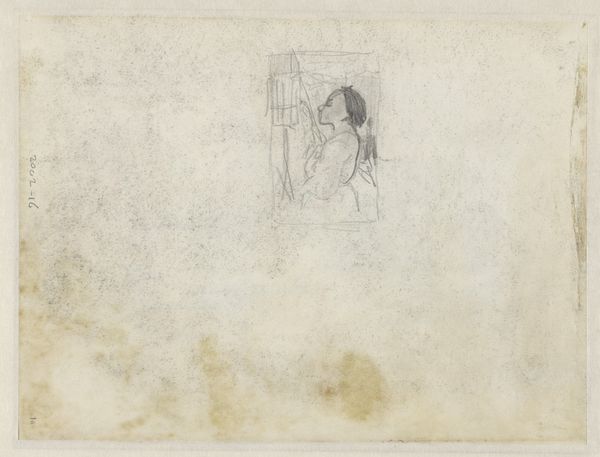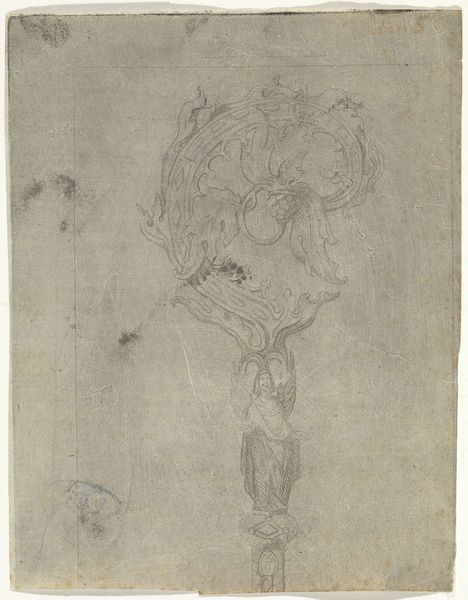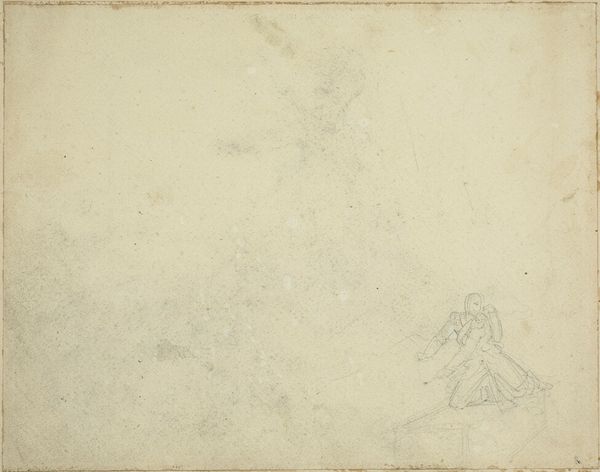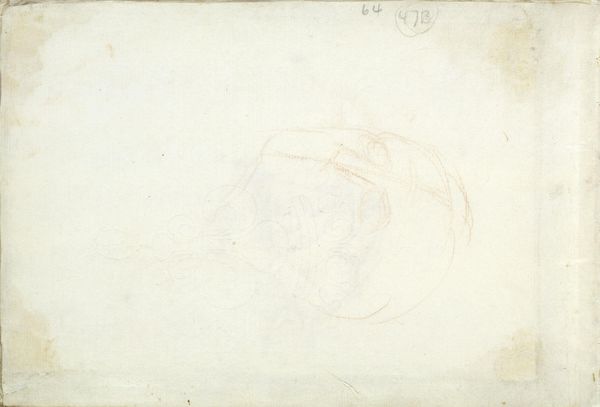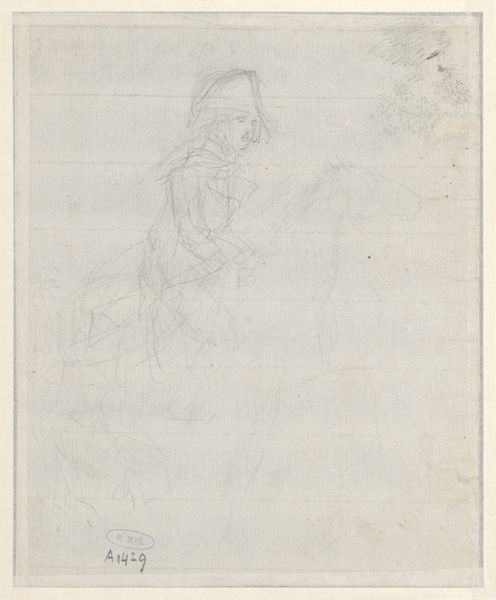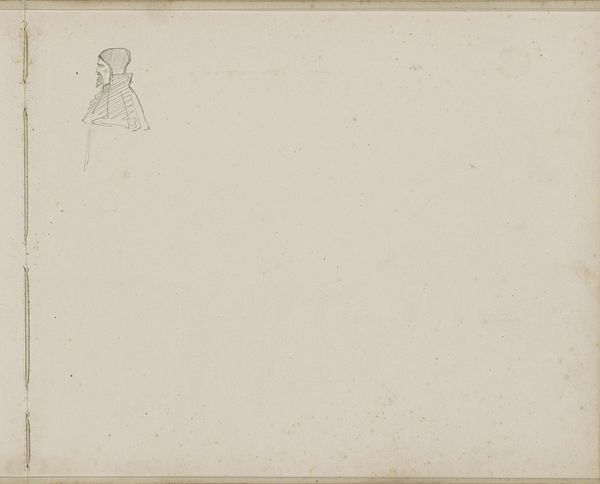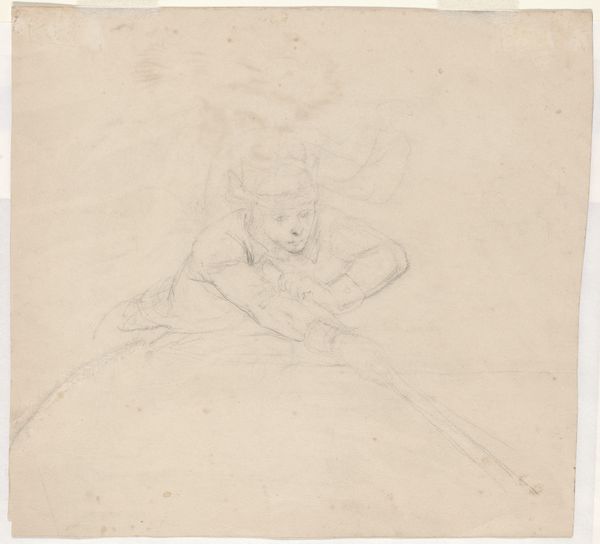
drawing, pencil
#
drawing
#
pencil sketch
#
figuration
#
11_renaissance
#
pencil
#
line
#
watercolor
Dimensions: height 174 mm, width 229 mm
Copyright: Rijks Museum: Open Domain
Editor: This is "Studie naar een beeld van een leeuw," or "Study of a statue of a lion," a pencil drawing made sometime between 1480 and 1520 by an anonymous artist. It has a delicate quality because of the thin lines. How would you interpret the symbolism in this sketch? Curator: Consider the enduring power of the lion as a symbol – for millennia, across diverse cultures, it's represented strength, courage, and royalty. The image, though a study, invokes these ancient associations. Do you notice anything else that stands out? Editor: The isolated scroll shape, floating to the right of the lion’s head. It almost seems disconnected from the lion itself. Curator: Precisely. While the lion projects raw power, the scroll suggests intellect, ornamentation, civilization. Could the artist be contemplating the tension between these ideas, even within a symbol of power? Lions were common heraldic symbols. Might this study reflect preparation for such a commission? Editor: That's fascinating! So, the drawing isn't just a study of form, but also an exploration of ideas connected to power and its visual representation. Curator: Indeed. Visual symbols carry heavy cultural and psychological weight. The image resonates precisely because we still understand the lion, centuries later, to embody these qualities. Now, what about the medium, pencil? What is communicated through this choice of tool? Editor: The pencil lines are fragile, delicate. Perhaps the artist felt that using more permanent tools would project too much finality? Curator: Precisely. The use of pencil is almost a commentary in and of itself on permanence and meaning making. Editor: I hadn’t thought about it that way before. I will certainly view heraldic images in a different light now.
Comments
No comments
Be the first to comment and join the conversation on the ultimate creative platform.
